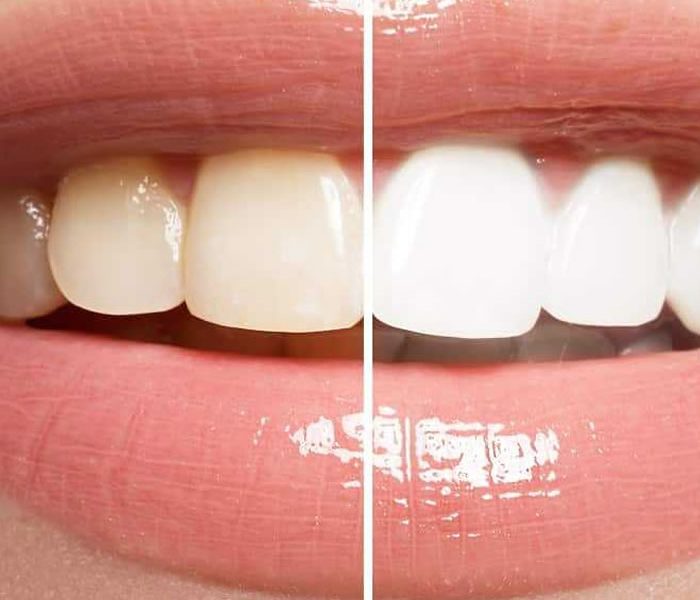Today, implant treatment is the process of placing screws made of titanium that mimic tooth roots into the jawbone of missing teeth. In this way, it is a current and successful treatment option that provides a more natural appearance in providing the function of the lost teeth.
What is an Implant?
An implant is actually a prosthesis placed to replace the function of a missing structure lost in the body. Dental implants are produced from Titanium metal in alloy form or Zirconium by processing Titanium metal in different proportions. Implants placed in the jaws consist of two parts: the body and the abutment that carries the prosthesis.
The length and diameter of the implants to be used during dental implantation vary according to the bone structure in the mouth of the patients, the height and thickness of the jaws. In addition, with the use of tomography devices that allow detailed examination of the jaws in recent years, the length and diameter of the implants to be used can be determined before the operation by having clearer information about the dimensions of the jaws.
If you want to have implants, you can come to our clinic and have your detailed tomographic measurements made and you can also get information about implant prices.
Which Procedures Does Implant Treatment Include?
Implant treatment is carried out in two stages, the first being the surgical stage and the second being the upper prosthesis construction stage. Placing the implant into the bone requires an average of 20 minutes for each tooth. The total duration of the procedure depends on the bone structure and the number of additional surgical procedures, if necessary. Although local anesthesia is generally preferred during the procedure, general anesthesia or sedation may be preferred in some cases. Dental implant surgery is performed after local anesthesia and you will not feel any pain during the procedure.
In some cases, dental implants cannot be placed in the jaws in optimum dimensions due to limitations such as sinus cavities in the upper jaw, proximity to the jaw nerve in the lower jaw or decreases in the thickness of the bone. In these cases, bone augmentation operations are performed either by using the patient’s own jaw bones or by utilizing artificial bone grafts.
How is an implant made?
Before the implant treatment, detailed analyzes and planning procedures are performed by our specialist physicians and all detailed information and issues related to the operation are explained to you. There are two different options for implant placement.
In the one-stage implant procedure, gum healing caps are attached after the implants are placed. However, in some cases, especially in positions where the forces that can be measured during the placement of the implant into the jawbone, which we call the placement torque, are weak, that is, the primary stability is weak, the two-stage procedure is applied. After the implants are inserted, they are covered with gum and then the implant is expected to heal in close contact with the jawbone, i.e. “Osteointegration”. In this process, prosthetic heads are attached after healing.
Advantages of Implant Treatment
The fact that the teeth on the implant function the same as natural teeth and that implant treatment can be used for many years without any problems is one of the first advantages of implant treatment that comes to mind. Implants are known to have a follow-up period of approximately 40 years, which is an acceptable period. When the daily care routine is done effectively and not interrupted, you can use your implant teeth for a long time in a healthy way.
If there is a problem with a single tooth and a single member implant is required, this can be done in a short time. In single member implant applications, the toothless space can be restored with implant treatment without any damage to the surrounding teeth. Of course, it is also very important that the implant procedure is performed in a reliable center.
Non-Surgical (Seamless) Implant Stages
The operation is known as “Flepless”, that is, non-surgical or seamless implant operation, which is performed by opening an area in the area where the implant will pass with or without a guide plate and placing a gum healing cap after the implant is placed. With the developing technology, tomography and intraoral model are combined in computer programs and a simulation is prepared by determining the thickness and height of the bone area and the angle and position of the implant to be placed.
Since there is no incision on the gum in this method, healing is more comfortable. Since the integrity of the gingival tissue in the area is preserved, a faster and aesthetic healing process is achieved. Thus, a faster return to social life is ensured.
How Should Care Be After Implant?
Care after the implant procedure is very important and should be taken into consideration. As it is known, these procedures are a surgical operation and it is normal to experience swelling afterwards. A slot is opened in the jawbone with the slot opener burs in the implant systems and the implant is placed inside. Ice application is recommended after the treatment. You can reduce pain and swelling by applying ice compresses on the outside of your mouth.
This application is generally recommended to minimize swelling. However, you should make sure that this period does not exceed 5 minutes, as this may cause a disruption in the nutrition of the area. During the healing process, you should avoid very hot, very cold or hard foods as much as possible. In general, our dentists recommend consuming room temperature drinks and foods. The first 48 hours after the implant are very important, so patients are advised to stop smoking as much as possible. In addition, you should avoid both gargling and rinsing your mouth for 1 day. You should also be calm and gentle when brushing your teeth or flossing in the first week.


